Thousands paid tribute to late AMIA special prosecutor Alberto Nisman on Saturday night on the fifth anniversary of his unsolved death.
Nisman led the probe into the 1994 bombing of the Argentine Israelite Mutual Association headquarters, which left 85 dead and 300 wounded. He was 51 years old on January 18, 2015 when he was found dead in his Puerto Madero apartment of a gunshot wound to the head, delivered at close range from a handgun found at his side. His death created a fault-line in Argentina – some are sure he committed suicide, while others are convinced he was murdered.
On Saturday evening, a large crowd – estimated to be around 3,000 demonstrators by international news agency AFP – marched in Nisman's name.
Sara Garfunkel, Nisman's mother, was among those in attendance at the event, which was organised via social networks.
She was joined by figureheads of Mauricio Macri's Juntos por el Cambio coalition, including Civic Coalition lawmaker Elisa 'Lilita' Carrió, former security minister Patricia Bullrich and Buenos Aires Province lawmaker Waldo Wolff.
The gathering, which took place at the Plaza Vaticano, next to the Buenos Aires' famed Teatro Colón, carried a strong oppositional tone. The crowd shouted "murderer" every time Cristina Fernández de Kirchner's name was mentioned as their way of blaming the former president for Nisman's death.
They loudly rejected suggestions that he had committed suicide and many demonstrators carried banners reading: "It was not suicide, it was a murder."
Garfunkel said that in the past five years Argentina had failed to find justice for her son's death.
"This prosecutor was murdered and we know nothing. I do not understand how a man of his strength and determination could commit suicide," said another demonstrator, a 55-year-old woman who gave her name as María.
President Alberto Fernández, also came in for heavy criticism at the event. He said this month he doubts Nisman killed himself but said there is no evidence of murder.
Fernández will travel to Israel this week for an international commemorative event marking Holocaust Day and the 75th anniversary of the liberation of the Auschwitz concentration camp.
In contrast to the rally, the Delegation of Argentine Israelite Associations (DAIA) Jewish organisation opted to hold a quieter ceremony at the La Tablada ceremony on Sunday, where Nisman's body is buried.
During its main speech, the organisation's head, Jorge Knoblovits, said that "today we are certain that Alberto was killed," adding that the late prosecutor had "investigated the most relevant and most contaminated cause in Argentina, a case that it was contaminated by intelligence services, and by politics."
Nisman's former wife and children had a private ceremony later Sunday at the same location.
Other events demanding justice for the late prosecutor took place at various locations across the country.
AMIA bombing
The July 1994 bombing at the Argentine Israelite Mutual Association (AMIA), a Jewish community centre in the capital, remains the deadliest terror strike in the country's history: it killed 85 people and wounded 300.
After a botched investigation tainted by corruption allegations, Nisman was appointed to lead a new probe. In 2006, he accused Iran of ordering the attack via the Lebanese militant group Hezbollah.
But his efforts to prosecute five Iranian officials, including former president Akbar Hashemi Rafsanjani, were cut short when Fernández de Kirchner's administration signed a deal with Iran to set up a Tehran-based joint commission to investigate the attacks.
Nisman accused the then-president of sealing the deal in exchange for oil and trade benefits, basing his accusations on hundreds of hours of wiretaps. Fernández de Kirchner dismissed the allegations as part of a plot by disgruntled intelligence agents to discredit her.
Days later, on January 19, 2015 – and just before he was to present his findings to Congress – the prosecutor's body was found in the bathroom of his Puerto Madero apartment with a gunshot wound to the head, delivered at close range from a handgun found at his side.
An initial autopsy concluded Nisman was alone. However, a second forensic probe two years later by the Gendarmerie (Border Guard) backed the murder theory supported by Nisman's family and the Argentine prosecutors' association.
The probe into Nisman's death is still ongoing, after passing into federal jurisdiction in 2016. Four of the late proseutor's bodyguard and his IT technician, Diego Lagomarsino, the owner of the gun that took Nisman's life, face prosecution. Lagomarsino maintains that Nisman asked him to loan him the gun, saying the prosecutor feared for the safety of his daughters.
Nisman's complaint against Fernández de Kirchner was dismissed on multiple occasions by the courts, but in 2016 it was reopened by Federal Judge Claudio Bonadío. It now awaits a date for oral trial.
Fernández de Kirchner, who was in office from 2007 to 2015 and is now vice-president, is accused of having attempted to conceal Iranian involvement in the bombing in return for lucrative trade deals with her government.
She forcibly denies the allegations.
– TIMES/AFP











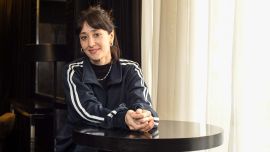

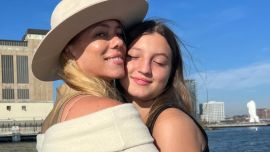






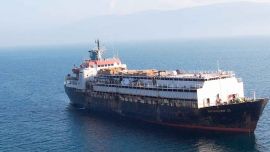


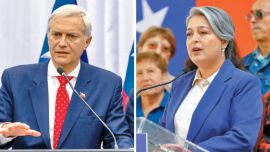
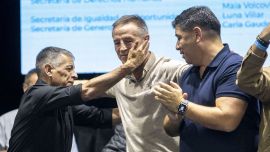
Comments